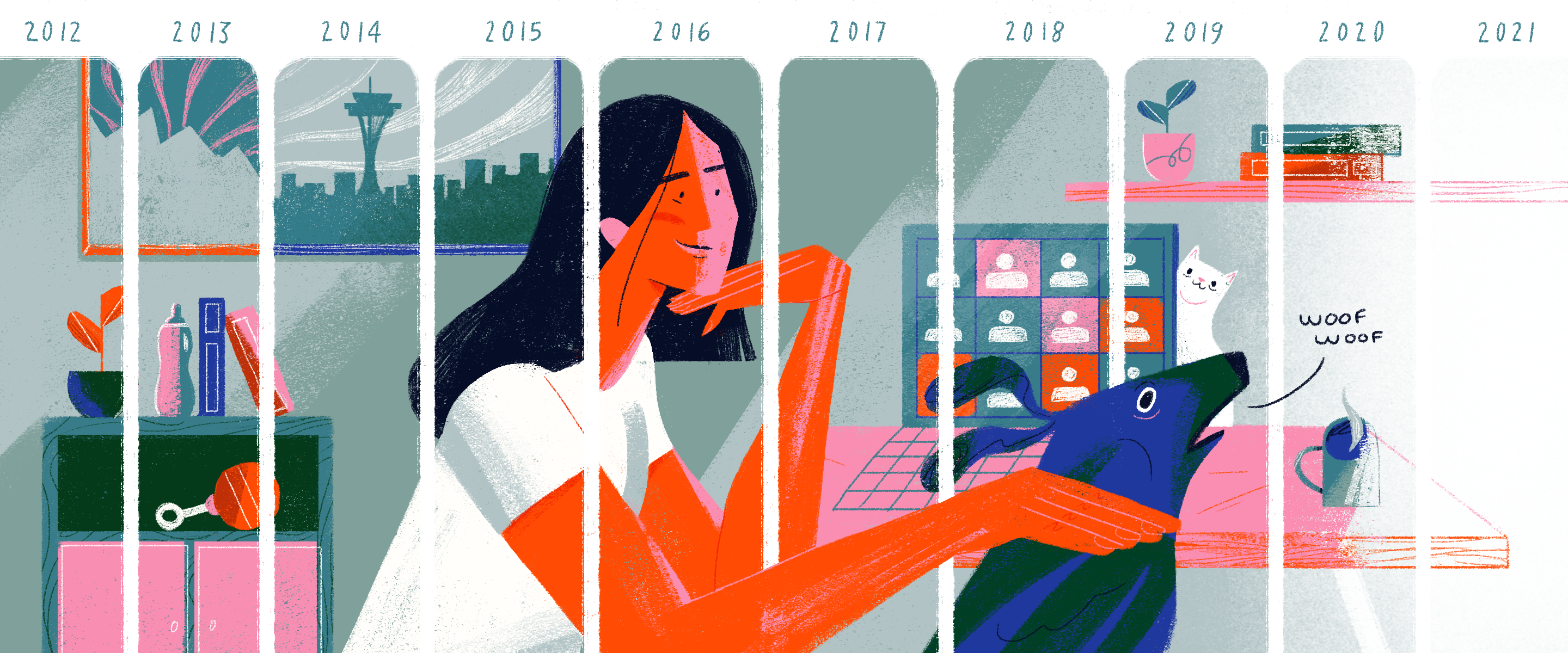A lot can change in a decade.
In January, 2010, I was single, living in Chile, working in the Chilean Ministry of Economy and T9 texting on my Blackberry Pearl. By December, 2019, I was married, had a daughter, was living in Seattle, working at Doist and communicating via emojis.
Doist was one of the very few mainstays of my life during the 2010s — I spent 100 out of the decade’s 120 months with the company, having transitioned from “PR freelancer” to “wearer-of-all-marketing-and-sometimes-HR-hats” to “Head of Marketing”.
When I first started at Doist back in 2012, our team was just Amir, Allan, David, Gonçalo, Nuno, Costa, and Roman. Now, we’re 75 people in 30 countries.
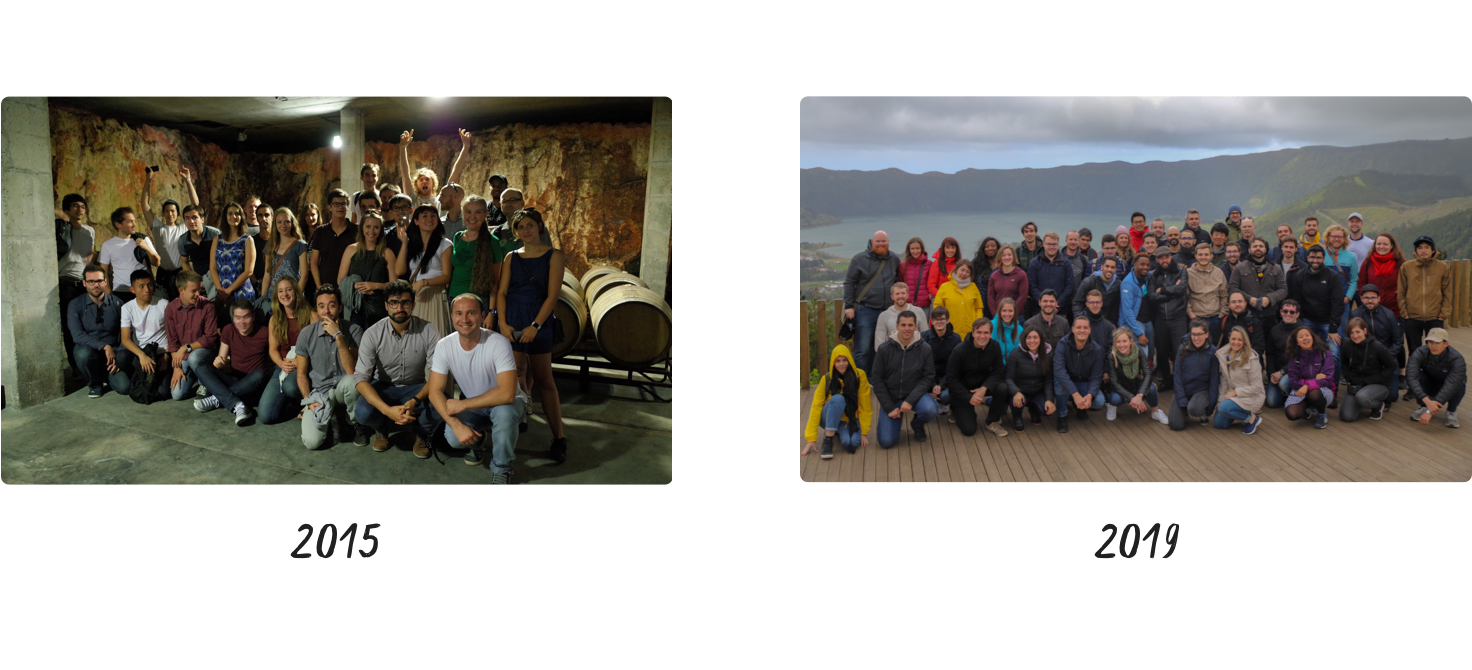
My longevity, though, is not unique. All those guys I just mentioned? All but one is still at Doist. In fact, only 8 people (out of 112) have ever left the company voluntarily, resulting in a 98.5% voluntary retention rate over 10 years (our total retention rate is 97%). More than 50% of Doisters have been with the company for over four years.
Our remote-first peers boast similar stats: Buffer has a retention rate of 94% and an average tenure of 2.4 years, GitLab’s retention is 85%, BuySellAds is 90%, and Zapier’s is 94%. Meanwhile companies like Google and Amazon struggle to keep employees for barely a year.
What’s the secret recipe for retaining employees when you can’t actually see them every day?
If you ask me (and the experts), the most important ingredient for employee retention is trust.
Build work relationships on a foundation of trust
In my blog post on building trust in the remote workplace, I used the Great Place to Work organization’s definition of a high-trust culture as a frame of reference. To recap: a high-trust company culture is one where employees believe that:
- They are treated with respect as people and professionals
- Leaders are credible (i.e. competent, communicative, honest)
- The workplace is fundamentally fair
By resisting the urge to treat teammates like children who need monitoring, mutual trust blossoms. Employees feel respected rather than demeaned, and this sentiment manifests itself in your team’s tenure rates.
| A Manager Who Doubts | A Manager Who Trusts |
|---|---|
| Micromanages employees | Extends autonomy to employees |
| Creates a fixed schedule for team members | Allows team members to work on their own schedules |
| Selectively provides information | Freely and transparently provides information |
| Uses time tracking tools and monitoring | Uses output as an indicator of work well done |
| Requires proof for time taken off | Gives the benefit of the doubt for time off |
In fact, high-trust companies can anticipate up to 50% lower employee turnover by simply cultivating those three pillars of a high-trust culture. At Doist we’ve found that in order for employees to unflinchingly believe in these values, especially in a remote environment, implicit trust needs to be established from day one.
Here are the concrete ways we signal trust from the start:
- No set work hours or location: We believe that the people we hire have good judgement to decide when, where, and how to get their work done. This is the beauty of remote work. We don’t impose hours when people need to be online, we don’t require people to work from any specific location, and we don’t monitor anything other than if someone gets their work done. People are trusted and empowered to get things done on the schedule that best suits their lifestyle. Anything else would be an imposition on their autonomy and wellbeing.
- No micromanagement: The first value that appears in our list of core values is Independence: “Others can trust that you’ll deliver on time and your teammates don’t need to worry about you keeping your word. You can easily manage your work and remain accountable with little or no direction.” As soon as anyone is hired at Doist, they are given real responsibility and the freedom to make meaningful contributions. We implicitly trust that they’ll make the right decisions and, as such, don’t waste time by micromanaging them.
- Everyone is trusted with information: Out of the hundred or so channels in our Twist workspace, only a small handful are private. This means that any teammate can browse and join any public channel, even if it has already been archived (and even if it has nothing whatsoever to do with their role in the company). Nearly 100% of the entire historical Doist knowledge base is accessible to everyone no matter their job title. This openness reinforces the concept that trust is implied from day one, not earned over an arbitrary time period.
- Compassionate HR policies: In a remote environment, you can’t physically see if someone is coughing or has a runny nose – we have to trust people when they say they need to take a sick day, or if they need time off for an unanticipated event. This is taken directly from our Time Off Guidelines: “We don’t have any formal policies around family emergencies, bereavement/compassionate leave, or other unexpected situations because we trust that you will do what’s best for you and your family in these situations.”
When you trust people to make the right decisions, they most often rise to the occasion. As our Head of iOS, Nuno, says:
“It’s like an echo – if you feel trusted, you feel more responsible, and if you are responsible, you earn more trust.”
Trusting your remote team members should extend to every employee touch point — how you communicate, the ways you collaborate, and the policies you put in place. More often than not, employees use the trust they’re given, and the flexibility they’re provided, to do their best work.
Allow flexibility that works with real life
A common misconception about remote work is we all work barefoot from beach-side cafes, sipping fruity cocktails as the sun drifts towards the horizon. Or, that we’re total slobs incapable of working anywhere that’s not our beds in any attire that’s not pajamas.
The truth is that about 80% of us work from our home offices in a cushy set-up that we’ve meticulously curated based on our own personalities, tastes, required lumbar support, and lighting preferences. We work hard for eight hours a day, and being comfortable in our surroundings is a productivity game-changer.
But beyond the flexibility to create your ideal WFH environment, remote companies offer people a more general work-life flexibility that many on-site companies choose not to. In progressive remote companies, people can set daily schedules that work best for their own particular needs. If I want to work from 6-10am and then from 4-8pm, I can. If I want to work from 3-11am and finish work before lunchtime to spend the day with my daughter, I could theoretically do that too.
I try and avoid working in the mornings which, for me, are always groggy and unproductive. After eating lunch, I start work and continue until around 7pm. Once my son is asleep, I usually work from 10pm up until 2-3am. This is, by far and large, my most productive block, especially when I need to engage in deep focus, like writing an important post/document, outlining a strategy, programming, etc. – Gonçalo, Doist’s CTO
The point is: It’s hard to retain a night owl when you force them to work a 9-5.
For night owls, early birds, and everyone in between, schedule and location flexibility are the top two most highly ranked benefits to working remotely.
If working when you want is an ice cream sundae, the ability to work from the location you want is the maraschino cherry on top.
Amir, Doist’s CEO, splits his time between Barcelona and Chile, where his wife Cata is from. Jan, our Head of Integrations who’s been with the company since 2015, spends months at a time in Japan perfecting both code and ramen recipes. Menghan, Doist’s Finance Manager since 2014, visits his family often in China despite residing in San Francisco.
While this group of time-splitters exists, we also have team members who use their flexibility to work from more rural areas. Enric, from our iOS team and with Doist since 2014, lives in a small town on the Spanish island of Menorca; Jaime, also from our iOS team and with Doist since 2014, lives in a village 25 kilometers outside of Porto, Portugal, in a town with only 8,000 people.
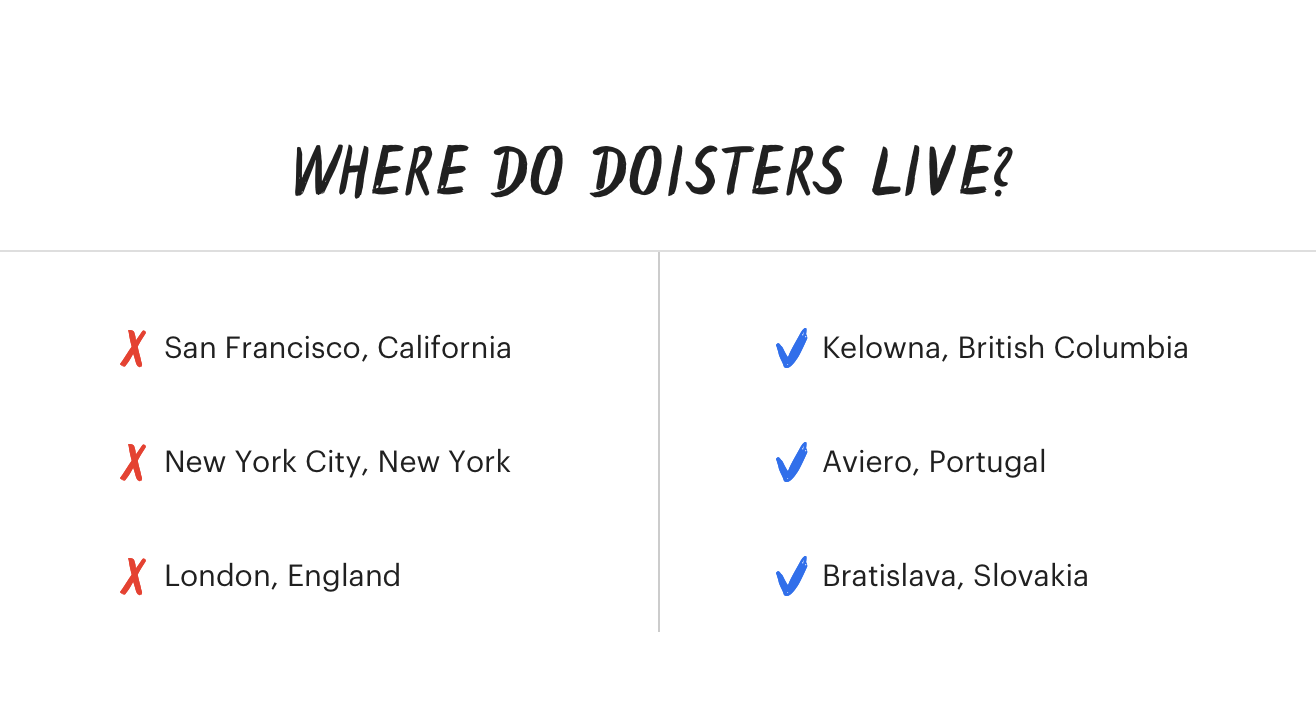
Remote-first work means that, for the first time in human history, people can access tremendous career opportunities and high-paying jobs regardless of where they live. They can opt-out of expensive city-centers like London or New York City, and find meaningful remote roles that keep them close to family and tied to their local communities.
These are opportunities worth leaning in and hanging on to.
Extend opportunities for personal and professional growth
At Doist we’ve found that when people are given autonomy and freedom to do their work on their own terms, they flourish in ways we couldn’t have anticipated. The combination of (1) trusting people with information, (2) giving them autonomy over their areas of responsibility, and (3) providing access to learning opportunities is a powerful driver for employee retention.
It’s no coincidence that one of our core values is mastery:
“You love what you do and care deeply about the quality of your work, down to the smallest details. You’re continuously learning and always pushing yourself to the limits of your ability. You’re never satisfied with the status-quo.”
Over the years, this core value has defined our company culture. When Doist first started, there were only a few of us. As a small, bootstrapped team, if we couldn’t figure out how to do it, who would?
Month by month and year by year, we all deepened our skill sets in unique ways: in 2011, Gonçalo started out as an Android developer, was promoted to Head of Android, and then went on to become our CTO. In 2011, I started out as a PR freelancer, transitioned to content/product marketing, and then became Head of Marketing. Amir has consistently embodied this value: in 2007, he rolled up his sleeves and created Todoist on his own because he couldn’t find an existing task manager that fit his needs. Today, he continues to evolve in his role as CEO of a 70+ person, 2-product, 3-brand remote company.
In addition to learning by doing, we’ve been intentional about building education and mastery into our company-wide project management system, through opportunities for personal and professional development. These investments are key to retention:
94% of employees in LinkedIn’s 2018 Workforce Learning Report say they’d stay longer at a company if it invests in their career.
Each project that we decide to tackle during what we call a “DO cycle” is directed by a squad leader. Essentially, there are no strict rules around becoming a squad leader – anyone at Doist can raise their hand and volunteer for the role.
Acting as squad leader provides individual contributors with opportunities to stretch their leadership muscles. For the duration of the project, they’re the captain of their own ship and have the power to make decisions (as well as the responsibility to deliver). They are tasked with setting clear responsibilities among their squad, communicating with others, planning meetings and aligning work to be done, resolving roadblocks, and empowering the team to reach deadlines.
In addition to leading squads, Doisters are encouraged to spend one month per year on a personal project (“Personal DO”) with the following characteristics:
- Each project must have a clear goal.
- The project must be planned at least two months in advance with the team lead.
- The project should be beneficial to Doist.
- All the stages of the project must be detailed in a Twist thread, from planning, to execution, and outcomes.
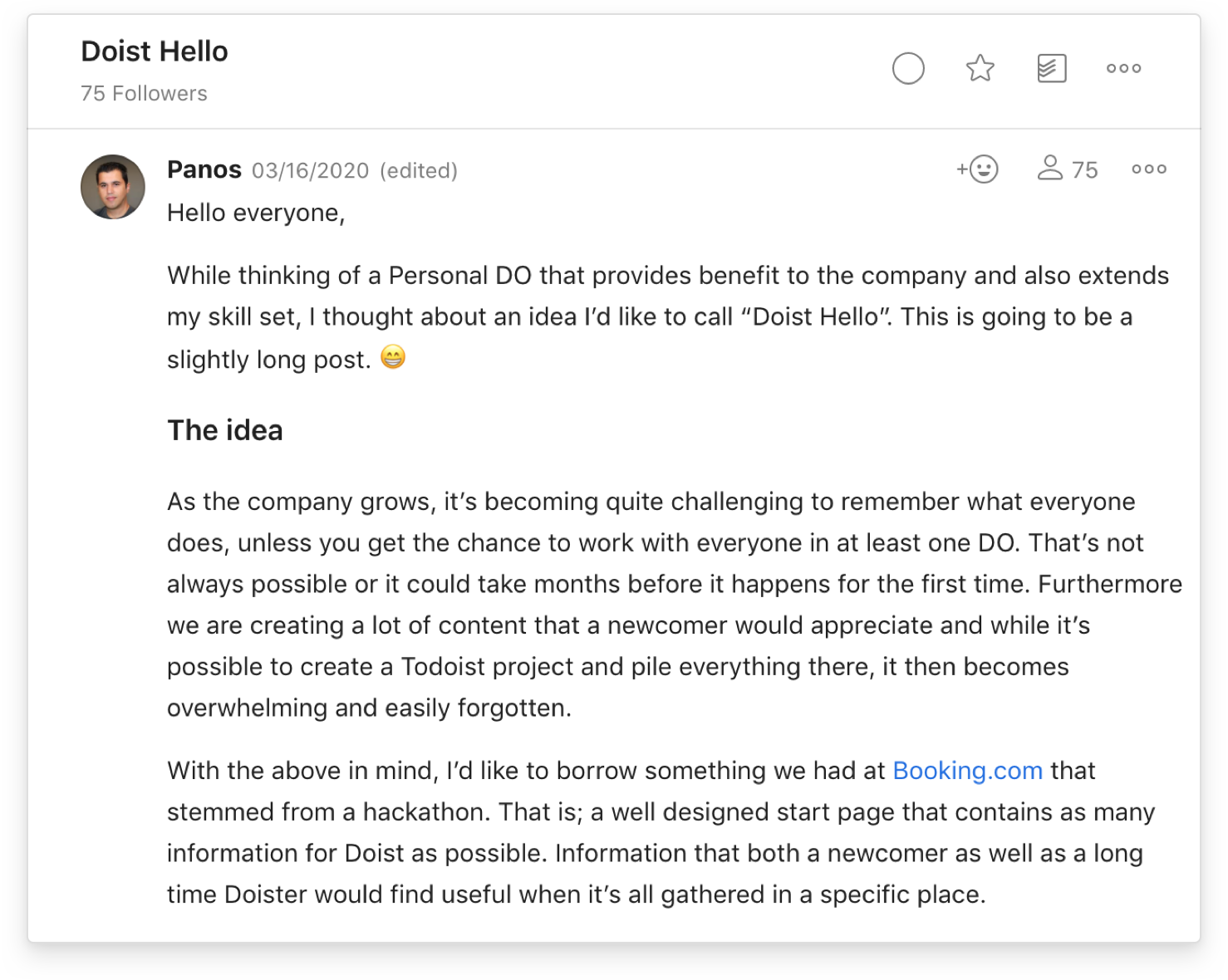
People get to work on projects that are meaningful to them personally and/or professionally, which is something we strive to extend to all employees, all the time — not just in the context of Personal DOs. For example, in 2015, Hugo started out as a marketing intern and transitioned into our resident growth expert. Dani began as a PR freelancer for the Spanish-speaking market, moved to oversee our translators, and is now working in Business Development. Most recently, João, the previous Head of Twist, transitioned into a new role as a User Research Architect.
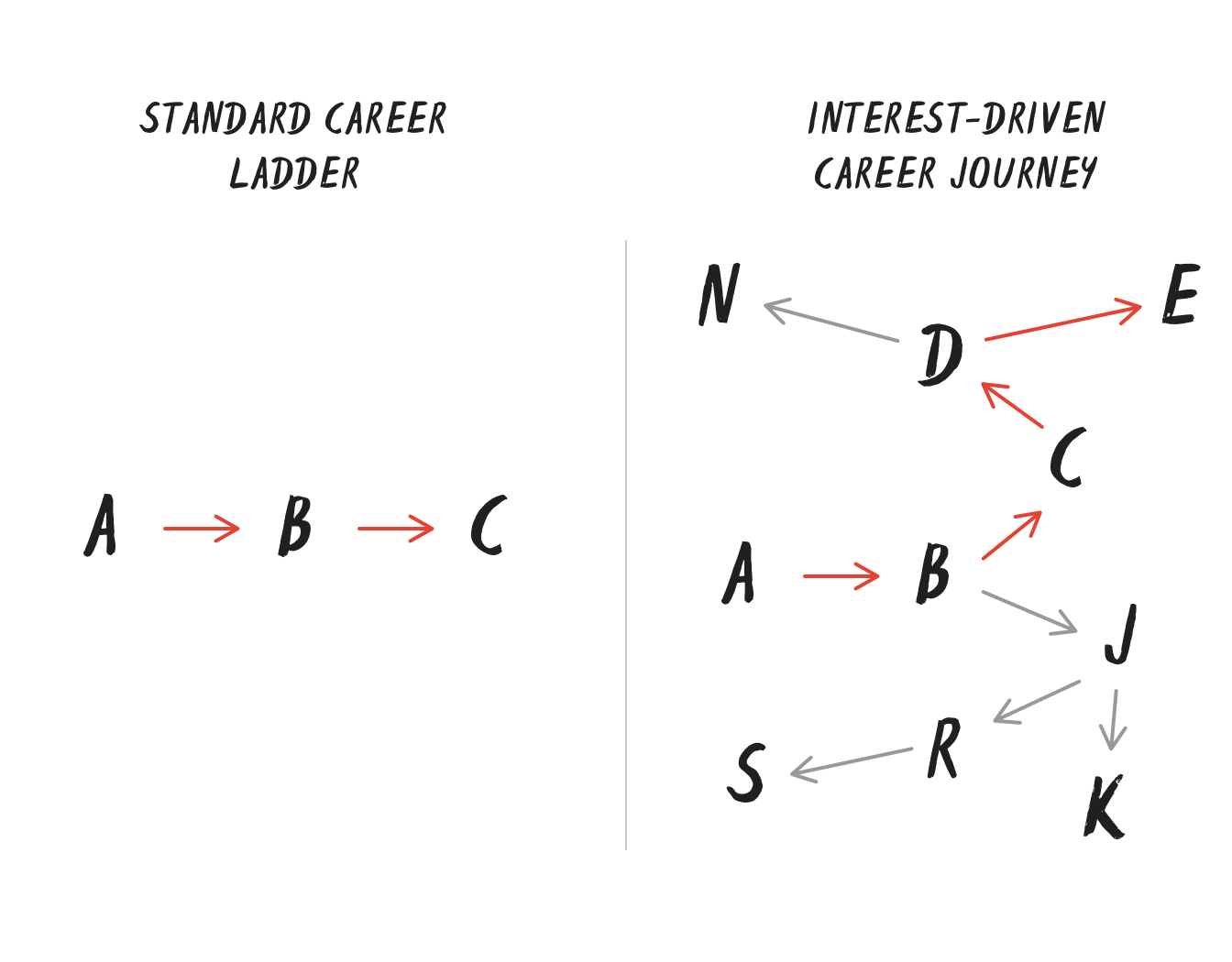
When you box employees into one single-track role, their growth stalls, they get bored, feel unmotivated, and they leave. But if you provide an open, nurturing space for employees to explore what they most enjoy doing and the probability that they will continue growing into — not out of — the company is much higher.
Create a calm and focused workplace
While you may have the opportunity to grow in your career by learning new skills and transitioning into new roles, a harried and imbalanced work environment can dampen the spirit of even the most enthusiastic, actualized employees. We learned this the hard way when we tried using Slack for team communication back in 2014.
With teammates distributed all across the globe, real-time chat seemed to bring us all together in a way that we’d never before experienced (this was prior to our first company-wide retreat in 2015). We shared memes, connected with folks outside our immediate team, and crafted enough custom emojis to last a lifetime. But behind the fun, trouble was brewing.
People were having a hard time disconnecting to do deep, focused work, fearing that they’d miss opportunities to partake in important conversations (or any conversations for that matter). Maintaining an uninterrupted conversation on a single topic across multiple time zones was impossible. For a fully remote company, it was an incredibly stressful and highly impractical way to work.
That’s when we drastically altered our approach to team communication. As we transitioned to being asynchronous-first, we all exhaled a collective sigh of relief.
| Synchronous-First | Asynchronous-First |
|---|---|
| Default to meetings | Default to writing |
| Time zone coordination is crucial | Time zones are not important |
| Focused on real-time collaboration | Focused on deep work |
| Encourages always-on culture | Encourages mindful disconnection |
| Fleeting conversation | Permanent documentation |
| Exclusive | Inclusive |
Working asynchronously means that each person can connect when it best suits them, contribute to conversations that are relevant, and then disconnect to focus on deep work. We don’t expect anybody to respond to any message immediately; 24 hours is our general timeframe. And despite the fact that asynchronous conversations may take longer to have, they are far more in-depth, inclusive, and calm than our real-time Slack conversations ever were — and they lead to better, more thoughtful decisions.
At the end of the day, no one wants to stick around an all-consuming, anxiety-inducing company. Burnout, in fact, is a main contributor to employee turnover. In a study conducted by Kronos Incorporated and Future Workplace, 46% of HR leaders report that burnout is responsible for up to half of annual employee turnover, and the American Psychology Association estimates that 550 million workdays are lost each year due to stress on the job.
When you feel the constant need to be connected and to respond immediately no matter what else you’re doing, your batteries can never fully recharge. People not only need uninterrupted time to work, but uninterrupted time to spend on hobbies, with their families or friends, etc.
I have no doubts that this asynchronous-first mentality has contributed to Doist’s incredibly high retention rate. David Heinemeier Hansson, aka @DHH the famously outspoken CTO of Basecamp and co-author of REMOTE: Office Not Required, affirms my suspicion:
Making progress makes creative people happy. Asynchronous communication done right allows for long stretches of uninterrupted time, which makes making progress much easier. Happy workers are less likely to quit. ERGO, asynchronous communication = higher retention.
Be uncompromising when it comes to company culture
Up to now, we’ve covered some of the most well-known “pros” of working remotely and how they contribute to employee retention. It’s common knowledge, now, in 2020, that people are more productive and happy when they can craft their own schedules and work without being constantly interrupted.
According to a RescueTime analysis, remote workers are 20% more likely than office workers to say they complete all their daily tasks and are 17% more likely to leave work “feeling accomplished about what they set out to do.”
But there’s one special feature about remote work that often goes unmentioned. One that can be just as powerful for employee retention as the others: culture.
Successful remote companies are incredibly intentional and often unwavering about their team culture. When you don’t see each other every day, the “glue” that bonds you together needs to be especially sticky. This is where your core values come in. At Doist, we use the “if it’s not a hell yeah, it’s a no” barometer to help us make decisions in accordance with our five core values: independence, mastery, communication, balance, and impact.
But, honestly, working alongside 70+ people from nearly 30 different countries, spread across 60 cities is just fun. As a remote team, you aren’t constrained to hiring people in a limited radius or singular zip code — the world is literally your oyster. The diversity of opinions and experiences, hobbies and humors, that comes with hiring such a wide spectrum of human beings not only improves our product innovation, but it makes for workdays riddled with delightful surprises.
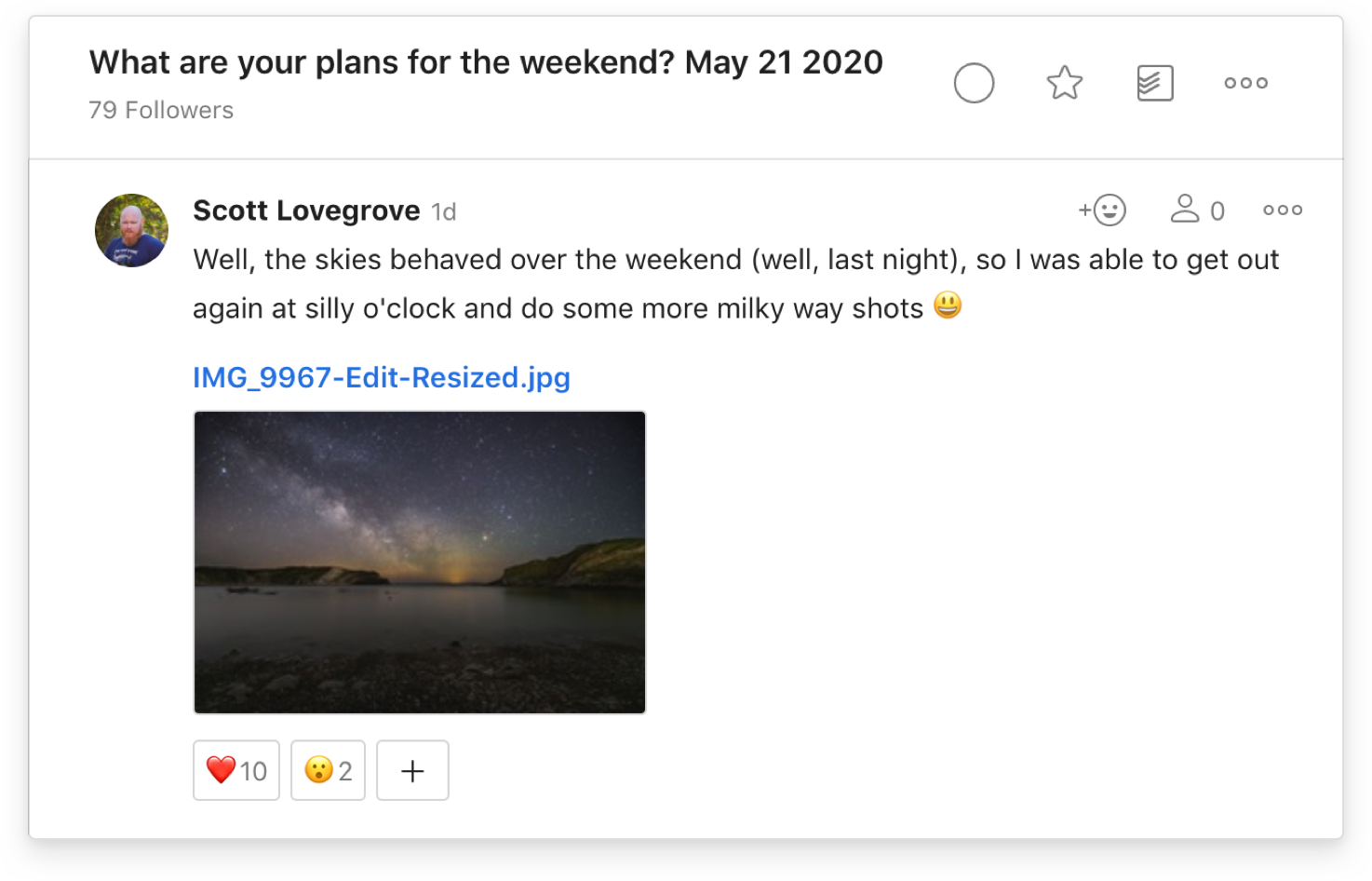
For example, every Thursday, Doisters contribute to a “What are your plans for this weekend?” Twist thread. Here, we get to see the house that Allan is renovating (with his own two hands 😮) in the Danish countryside. I can see pictures of Chase hosting Thanksgiving on his rooftop terrace in Valencia, Spain. And it’s 100% impossible not to smile at your computer screen when you see Keita’s daughter learning to ride a bike in her Costa Rican backyard 💜. It’s a privilege to get to experience the world on a daily basis through my coworkers’ lives.
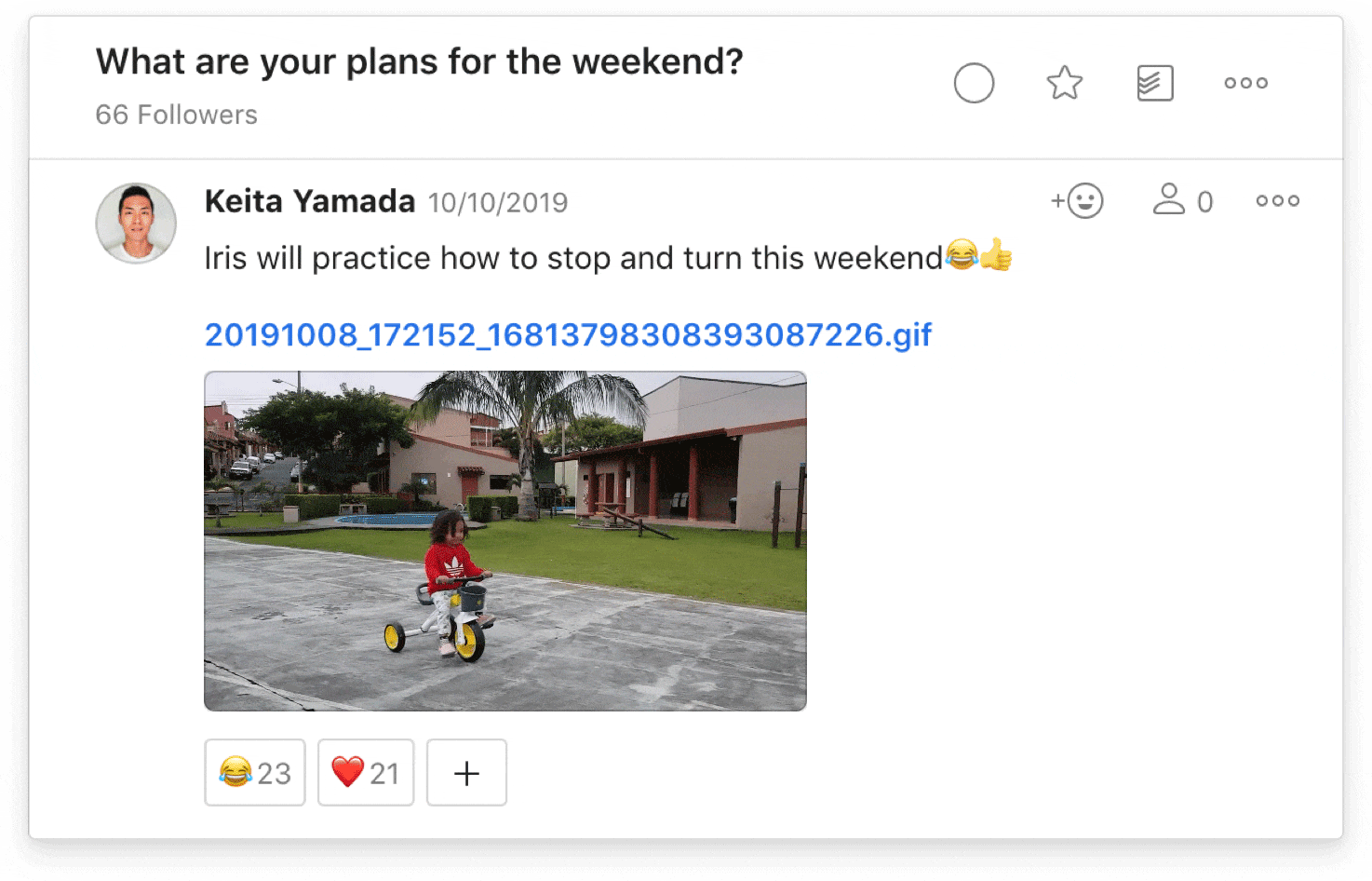
Diversity is in our DNA and this inclusive mindset has a strong foothold in our Founder Amir’s Scandinavian background. Over the past decade, we have strived to make Doist as egalitarian and hierarchically flat as possible, where each person’s voice is equally respected, no matter their position, tenure, nationality, gender, etc. This has helped establish a high-trust culture that contributes to our high employee retention.
If you think about it, most of these aspects that contribute to high employee retention are things that any company can do. Founders and managers that approach leadership with openness and methodical intentionality can begin to implement these sought-after elements of remote work relatively painlessly. Replicating them in a way that results in higher retention, though, is a lot more complex than just letting people WFH on Fridays.
Be intentional about building implicit trust, providing autonomy with accountability, and cultivating a welcoming, unique culture. It may push you out of your comfort zone at first, but I can hands-down guarantee that the results (and your colleagues’ awesomeness) will delight you.
